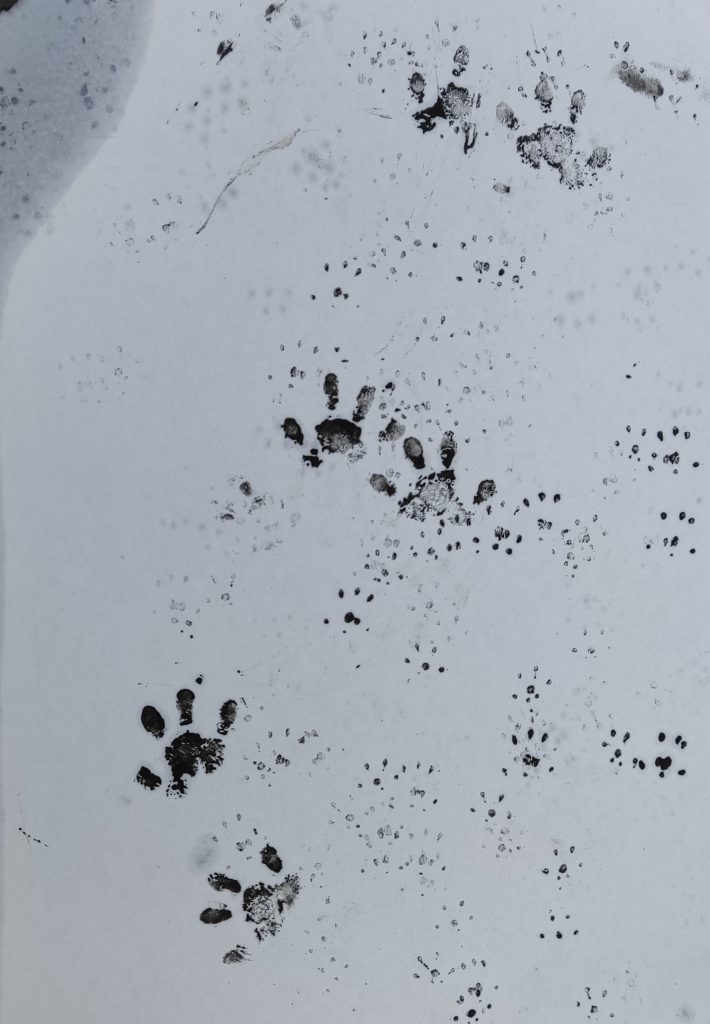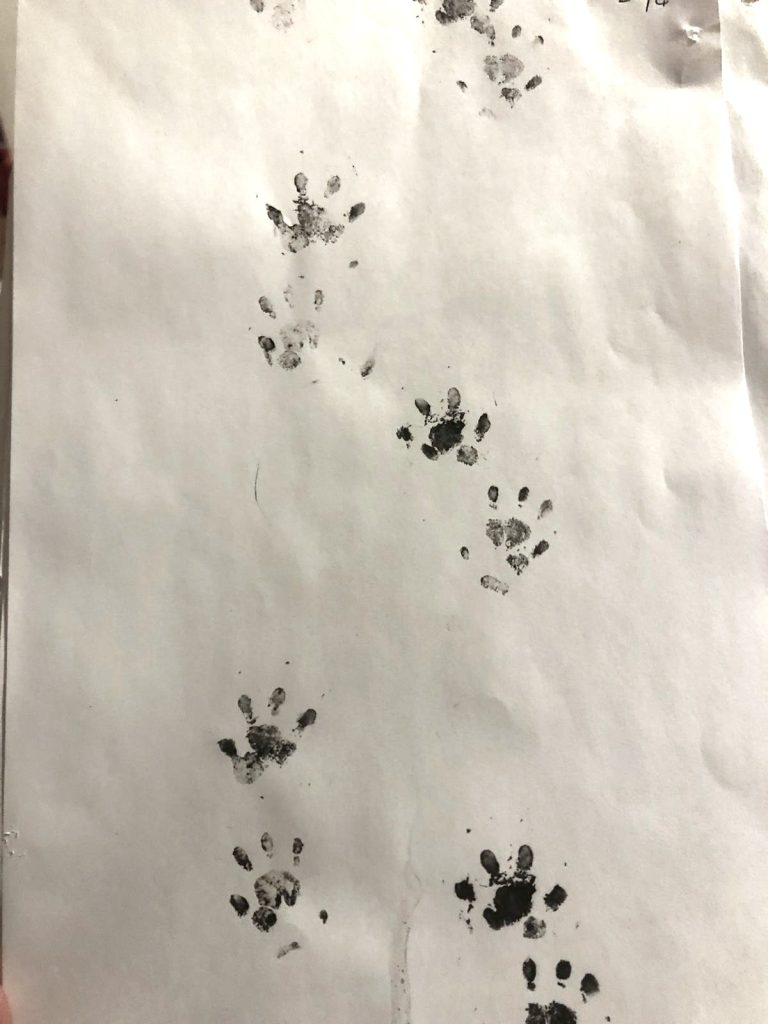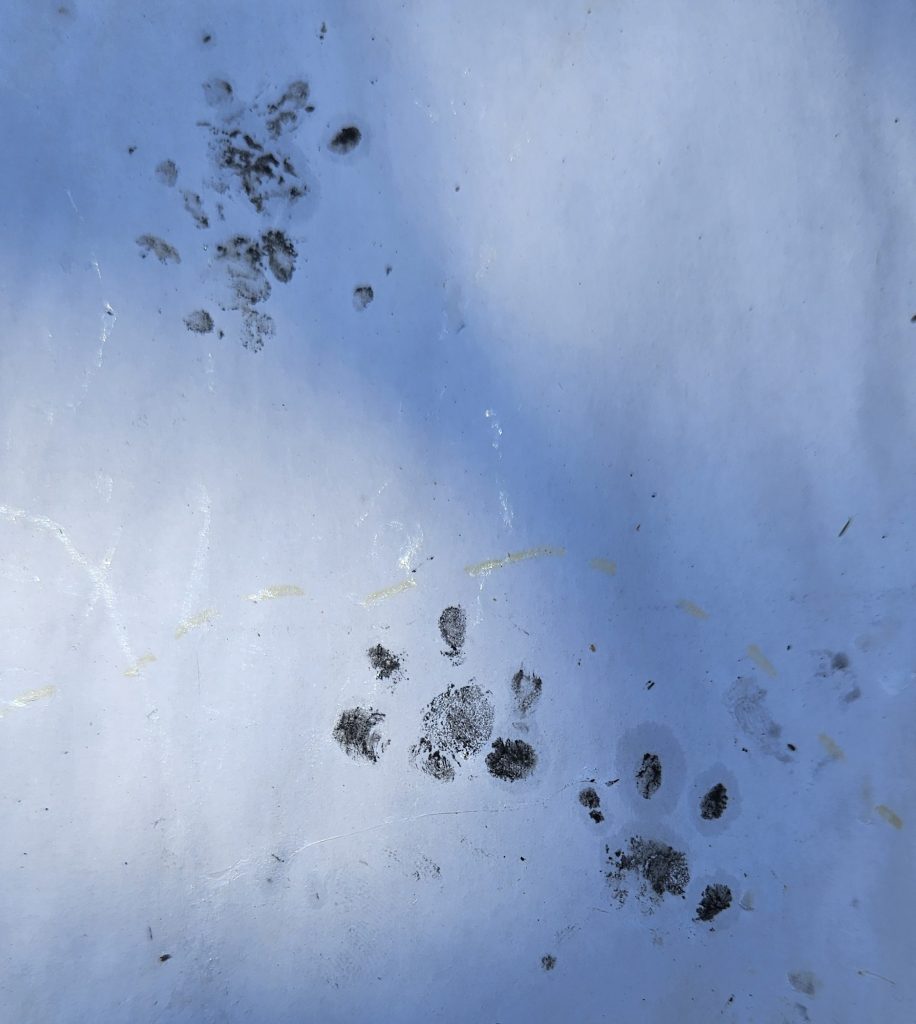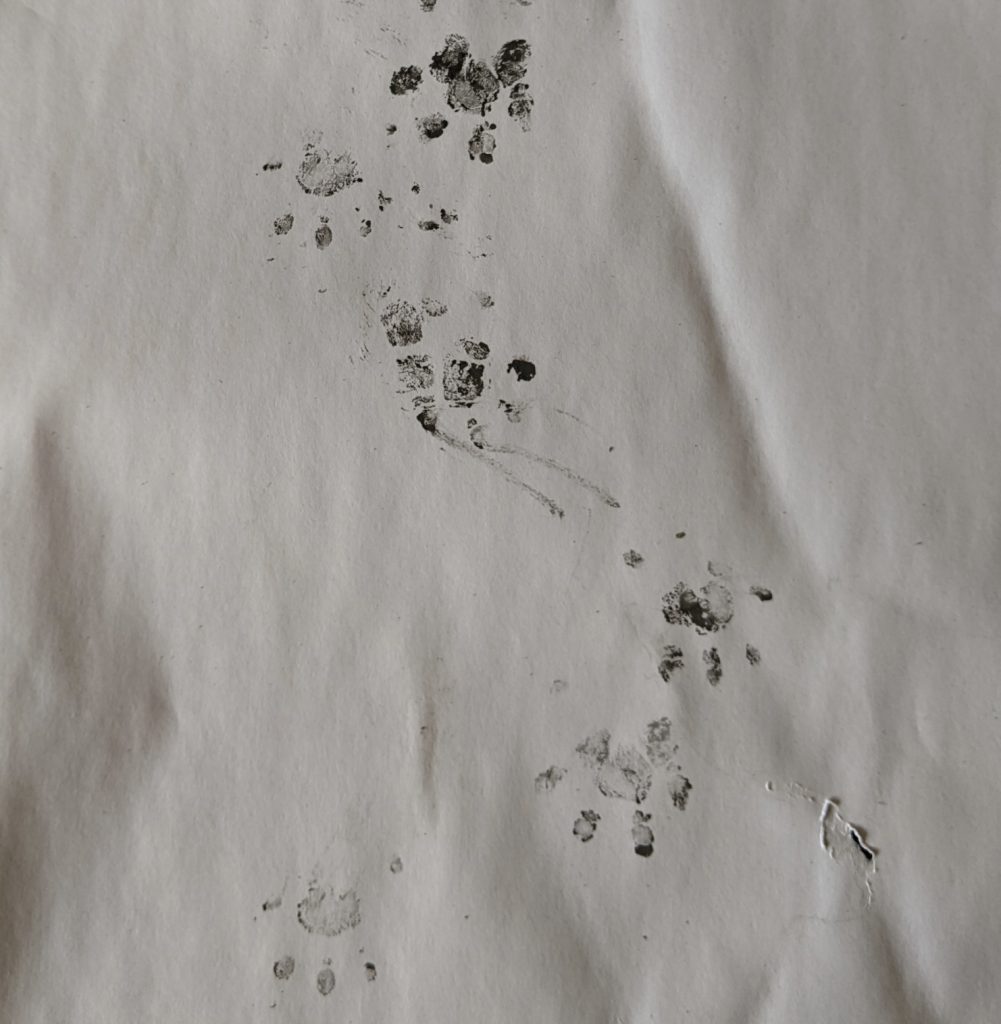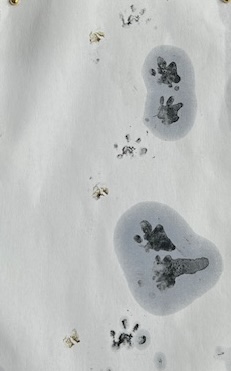The Launch Event
The Decline of Hedgehogs
How Can We Help Hedgehogs?
If you find an ill or injured hedgehog…
Monitoring Hedgehog Activity
Borrowing and using a tunnel
Identifying Tracks
Map of Hedgehog Activity in Onslow
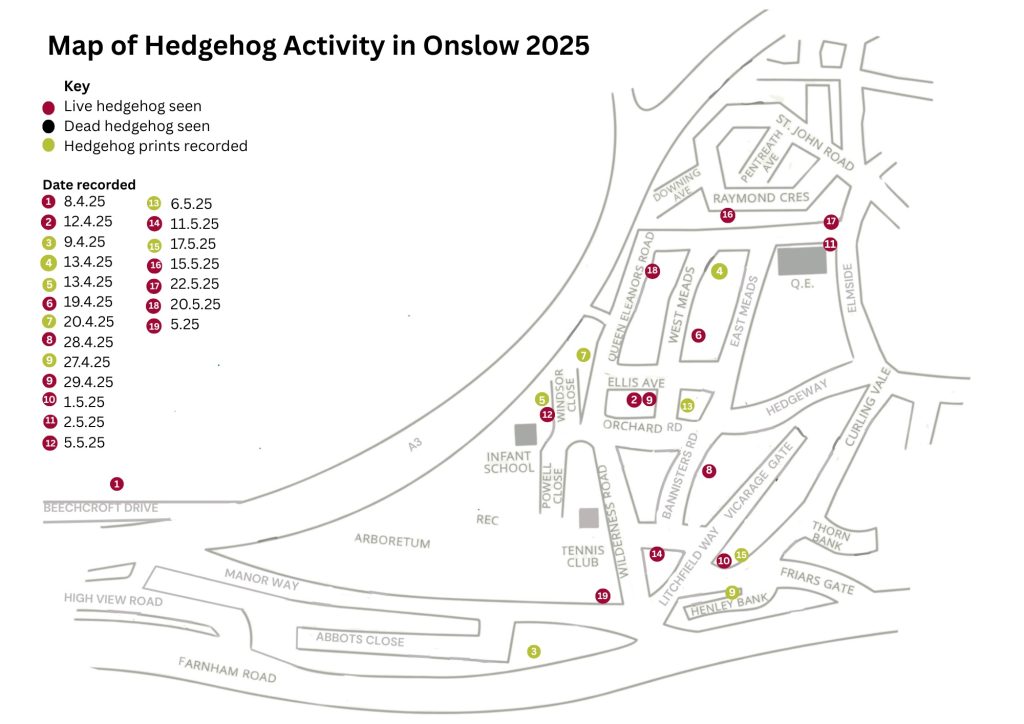
Click here to see a larger version of the map.
Scroll to the bottom of the page to see our gallery of footprints and photos.
Introduction

Hedgehogs are in serious decline in the UK. Since 2000 it is estimated that we have lost 30% of our urban hedgehogs and 70% of our rural hedgehogs. Here in Onslow Village we want to do what we can to help them.
The Hedgehog Highways Project is a joint initiative with All Saints Eco Group, OVRA and the University of Surrey. The aim is to make our gardens as Hedgehog-Friendly as possible by ensuring there is plenty of food for them and that they can easily move from one garden to the next as they forage and look for mates and nest sites.
The project also involves monitoring and recording the hedgehog activity in the Onslow area using small mammal tracking tunnels and reporting the tracks to our local survey and the UniS survey, and any actual sightings to the National Survey.
Launch Event on 6th April 2025
The slides used during Dr. Pirie’s talk can be viewed here.
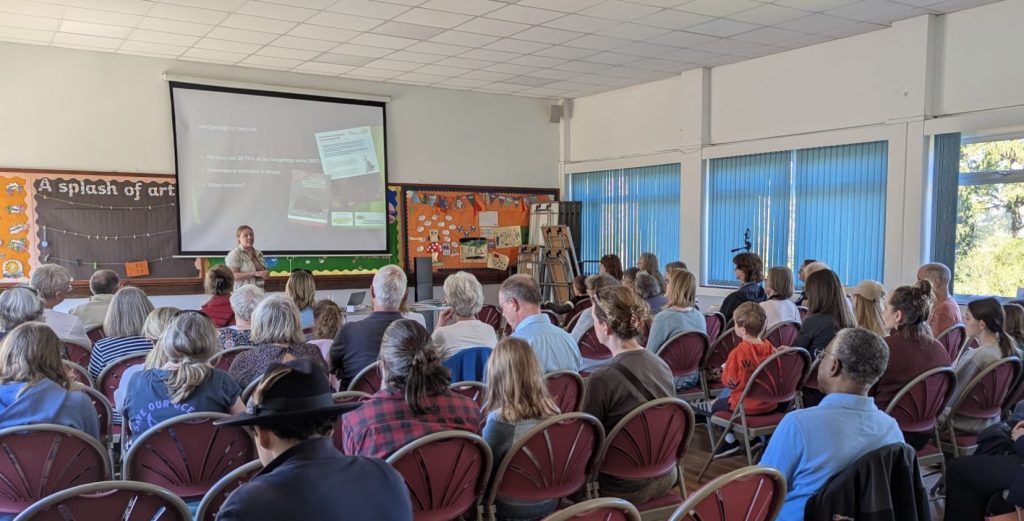
We had a great turn out for the Launch Event at All Saints church hall, where Dr. Tara Pirie from UniS came to speak to us about the threats facing hedgehogs and how we can help. Dr. Pirie is a lecturer in Ecology and Conservation and is well qualified for tracking hedgehogs in suburbia, having spent 10 years tracking carnivores in South Africa, specialising in leopards in her final few years there! More recently she and her students have been monitoring hedgehog activity around the university and have made the campus as hedgehog friendly as they can. Hedgehog numbers appear to have been steadily increasing since they started looking for their tracks in 2020.
The Decline of Hedgehogs
Dr. Pirie started by explaining the current plight of hedgehogs. In 2020 hedgehogs were added to the UK red list for endangered mammals, signifying that they are vulnerable to extinction.
Whilst recently there is some hope that the decline in urban areas may have slowed down, the decline in rural areas continues, with between a third and three quarters of the rural hedgehog population having been lost since 2000. It is thought that there are only about 800,000 hedgehogs left in the UK. Where they were previously common visitors to the gardens of Onslow, they are now rarely seen by most of us.

The reason for the decline in rural areas is predominantly loss of habitat. In the country hedgehogs live and forage in hedgerows. As farmers remove hedgerows in order to make bigger fields the hedgehogs lose their nest sites and food source and disappear with the hedges. In addition the use of pesticides also affects their food supply and can poison the hedgehogs themselves.
In urban areas there are other threats:
- Roads – Hedgehogs have short legs. This means they can’t climb very well. When hedgehogs get on to the road they often can’t climb up the curb stone to escape the traffic and so have to run along the side of the road until they find somewhere low enough for their little legs. It is estimated that between 150,000 and 335,000 hedgehogs are killed on Britain’s roads each year.
- Habitat loss from development and paving over grassy areas.
- Impermeable barriers such as fences and walls which prevent hedgehogs from moving between areas as they forage, meaning they can’t find enough food to survive.
- Machinery – Strimmers are particularly dangerous since they are used on the long grass where hedgehogs may be nesting during the day.
- Hazards in gardens such as drowning in ponds and getting caught in netting (including kids’ football nets).
- Bonfires – In the autumn piles of old branches waiting for a bonfire, look like the perfect place to hibernate.
How Can We Help Hedgehogs?
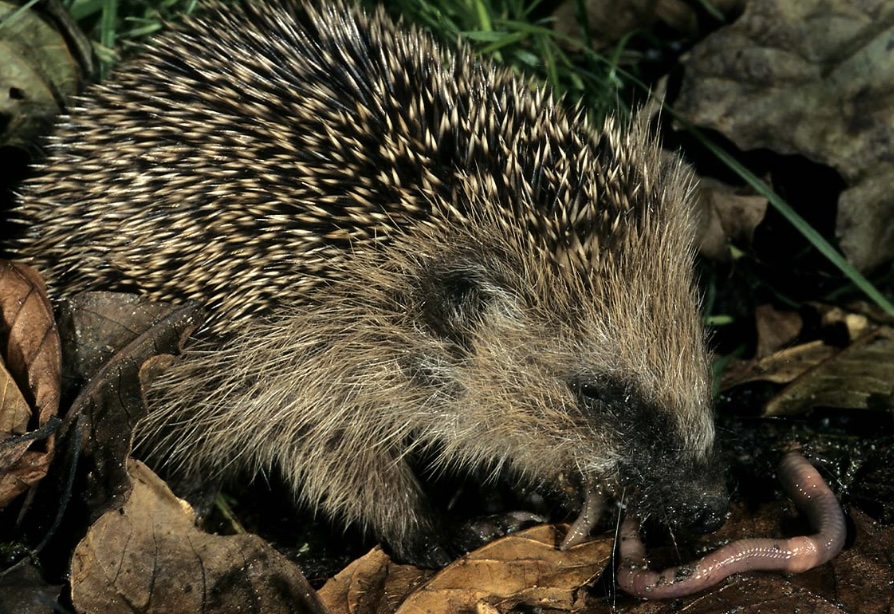
In order to understand how we can help hedgehogs we need to know a little bit about them. Their three favourite foods are beetles, earthworms and caterpillars. However they will eat lots of other things including leatherjackets, slugs, millipedes and earwigs and to a lesser degree snails.
During the day they find somewhere safe to sleep, under a pile of branches, in a pile of leaves, in dense undergrowth or in long grass. Then at night they come out to feed. They will often travel over 2km a night as they forage for food, look for a mate or look for suitable nesting sites. A single suburban garden is never big enough to meet their foraging needs. Foxes, cats and dogs don’t tend to bother them, but badgers will sometimes kill them and rats may eat young hedgehogs.
As it starts getting colder in the Autumn and the insects become scarce hedgehogs go into hibernation. It isn’t a particularly deep hibernation and during warmer days they may wake up and go foraging and perhaps find a new nest site. But they are mainly inactive between November and the end of March.
So if we want to help hedgehogs we need to provide suitable habitats for the things they eat, safe places for them to nest and routes that easily take them from one foraging spot to another. Specific things we can do include:
1. Leave piles of logs, branches, leaves and areas of long grass in places around the garden. Not only do these provide the perfect habitats for beetles and earthworms and other grubs but they also provide safe places for hedgehogs to sleep during the day, to make their nests when breeding and to hibernate.


2. Make sure there are hedgehog sized holes into and out of your garden. If there aren’t natural holes in or under fences then consider putting in a Hedgehog Highway by cutting a hole in your fence. The hole needs to be 13cm x 13 cm (about the size of a CD box). We have Hedgehog Highway plaques like the one in the photo if you would like one! Click here for more information about creating a hole.
3. Remember hedgehogs have short legs so aren’t good at climbing. Consider giving them ramps to help them get around your garden or into the next garden.


4. Put out food and water in low bowls. You can buy special hedgehog food but they are happy with dried or tinned cat food. But NEVER put out MILK or BREAD. They are lactose intolerant so milk makes them ill and bread fills them up without giving them any nutritional content.
5. Provide a hedgehog house so they have somewhere safe to sleep or hibernate.


6. Plant nectar rich flowers and build or buy a bug hotel to encourage more beetles and insects into your garden so the hedgehogs have more to eat. Avoid using chemical insecticides or slug pellets and be careful when strimming or cutting long grass.
7. Give hedgehogs a safe route out of your pond in case they should fall in or want to drink and be aware of the risks to hedgehogs of loose netting.
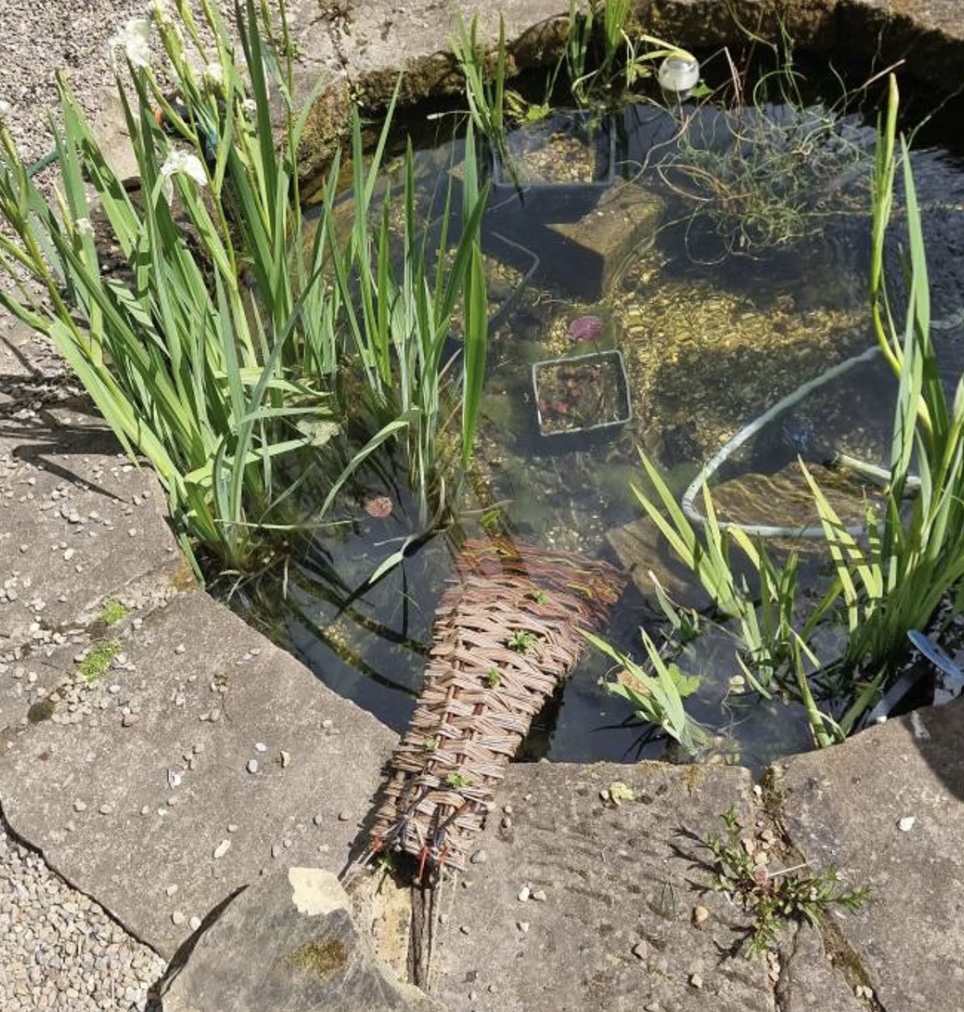

8. Always check your bonfire carefully before it gets lit. They are likely to be in the centre of the base. If you find a hedgehog carefully pick it up wearing gardening gloves, with any leaves or bedding it has around it, and put it in a box. Release it safely somewhere nearby.
If you find an ill or injured hedgehog….
If you find a hedgehog which appears unwell, perhaps it is out during the day and struggling to walk or not feeding or drinking then you should seek advice from a local wildlife rescue centre.
In order to find your closest rescue centre and to get advice on what to do you can call The British Hedgehog Preservation Society (BHPS) on 01584 890 801
Or you can visit the First Aid page of the BHPS website for advice by clicking here.
If you find an injured hedgehog then getting it to a rescue centre or vet is the best thing to do. Wear gloves to handle the hedgehog and place it in a box with a towel or newspaper and transport it as quickly as possible to reduce the stress of being handled. It is also best to be quiet around it again to reduce the stress. If taking the hedgehog to a vet it is probably a good idea to phone them first.
Monitoring Hedgehog Activity

Whilst sometimes you may be lucky enough to see an actual hedgehog, most monitoring is done by looking for hedgehog tracks using small mammal tracking tunnels. It is only by monitoring hedgehog activity in the village over a period of years that we will be able to see if our Hedgehog Highways project is improving things for hedgehogs.
Borrowing and using a tunnel
We have 10 of these monitoring tunnels which can be borrowed for a 2 week period. If you would like to borrow one simply email info@ovra.org.uk
When you borrow a tunnel you receive everything you need to get started, including the flat packed tunnel and base plate, some ink, some hedgehog food, your first 2 sheets of paper and 2 pegs to attach the tunnel to the ground. All you will need to provide are extra sheets of paper. You will also receive some information on identifying the tracks.
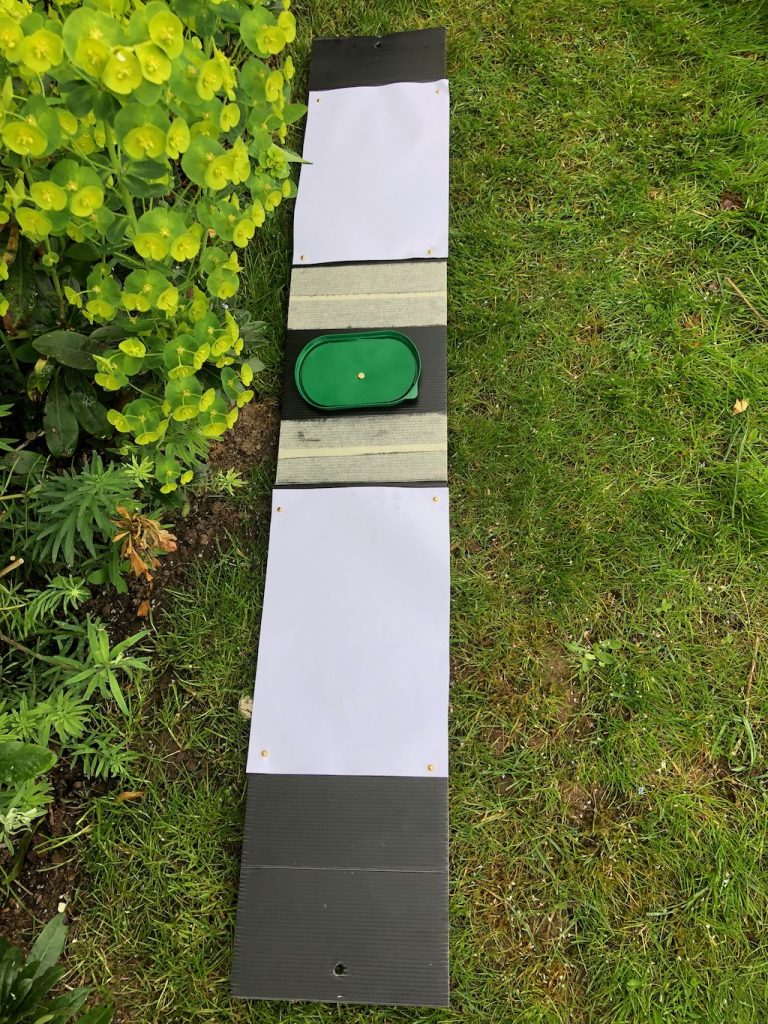
The tunnel comes with a base plate which is slid into the bottom of the tunnel. The base plate has a small dish for food attached to the middle, then two strips of masking tape on either side of the dish on to which you brush the viscous ink (make sure you give it a good shake before you put your brush in and be careful, it gets everywhere!). On either side of that are sheets of paper. Once the ink, food and paper are in position the base plate is slid into the tunnel. The tunnel is then pegged to the ground in a suitable position (see below). The hedgehog smells the food and walks into the tunnel to eat it.

As it eats the food it steps in the ink (charcoal powder mixed with vegetable oil so completely harmless). Once it’s had enough food it exits the tunnel leaving inky footprints on the white paper which can later be identified. The tunnel should get set up in position for about a week and should be checked each day preferably in late afternoon.
Replenish the food as needed. Once you have footprints on the paper you will need to change the paper so that you can clearly see new footprints as they appear. Just before your 2 weeks are up use the same email address to arrange a time to return the hedgehog tunnel.

Your tunnel should be positioned along a boundary. This could be along a fence, or a hedge or along the edge of a flower bed. Always have it running parallel to the boundary, not perpendicular to it. Make sure the tunnel is on flat ground because if it tilts when the hedgehog steps in to it the hedgehog will simply run away. Then peg it down at both ends through the holes in the tunnel and base plate.The holes in the base of the tunnel will show you which face of the tunnel should be on the ground. The edge with the closing tabs should be at ground level.
Identifying Tracks

Unfortunately hedgehogs won’t be the only animals that get attracted in to the tunnel by the smell of food. You are likely to get far more visitors that aren’t hedgehogs! These may include mice, rats, voles and cats amongst others. Luckily Hedgehog prints are very distinctive. They look like tiny handprints with quite long sausage like fingers, each print is about 2 – 3cm in length.
Our gallery of pictures at the bottom of this page will give you a good idea of what you’re looking for. However if you want to try to identify some of the other prints you’re seeing have a look at the slides from Dr. Pirie’s talk or follow the link below to a useful website:
Nature Volunteers
Hedgehog poo (known as scat) can also be a good clue that you have hedgehogs visiting your garden. It’s usually black and you can often see bits of beetle shell in it. It’s about the size of your little finger.
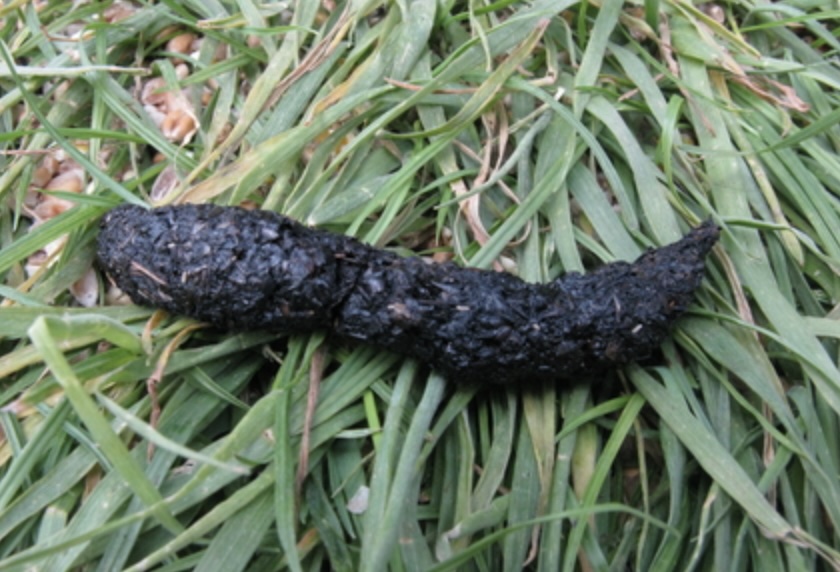
Reporting Hedgehog Activity
Reporting to our Hedgehog Highways Project:
If you borrow one of the tunnels and get some hedgehog footprints please send a photo of them to info@ovra.org.uk . We will upload the photo to our gallery giving the date and the road where they were seen, and we will add another dot to our map of hedgehog activity in the village. Names and addresses will never be included.
We would also love to hear from you if you are lucky enough to see a hedgehog in your garden, or unlucky enough to come across a squashed hedgehog on a road in the village. We will record all of these things on our village map. We will start a new map each year and hopefully will see more and more evidence of hedgehog activity as the years progress.
Reporting to the University Survey:
Dr. Pirie has her own survey going on at the university and would love to include your data. You can access it by clicking here. Or use the QR code below (simply point your smart phone camera at the QR code and it will ask you if you would like to open the link). You can report both tracks and sightings on the University survey.

Reporting to the Big Hedgehog Map, a national survey on the Hedgehog Street website:
Follow the link to report an actual sighting of a hedgehog (alive or dead). You can also report your hedgehog hole if you cut one in your fence to create a Hedgehog Highway!
Other Useful Websites
The following websites offer a wealth of information about hedgehogs and how we can help them, click on the links below to go straight to their websites.
The British Hedgehog Preservation Society
Hedgehog Street
The Wildlife Trusts
Gallery of Hedgehog Prints and Photos
